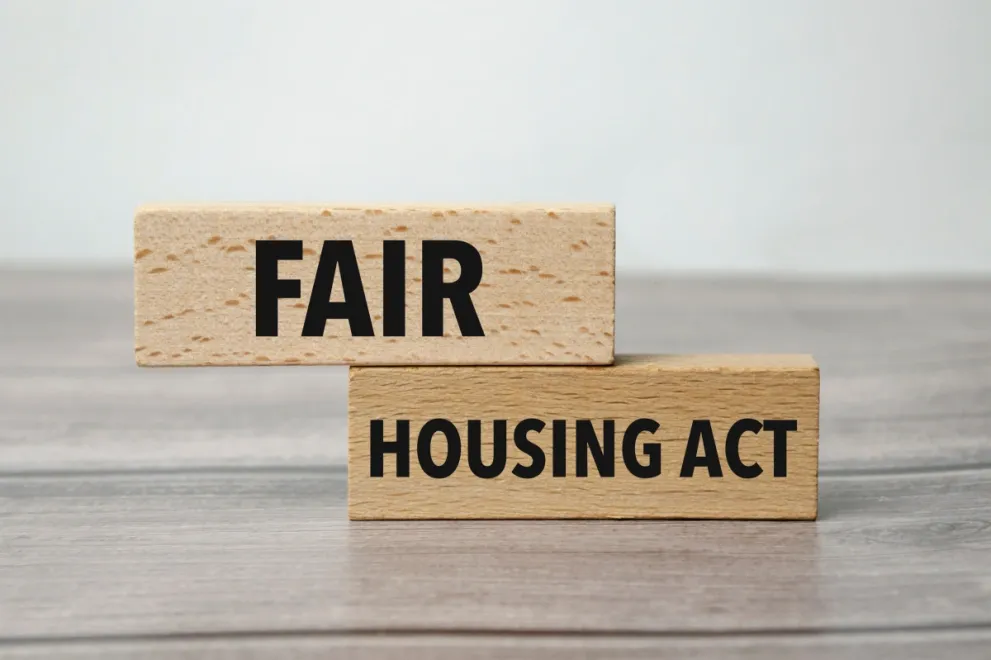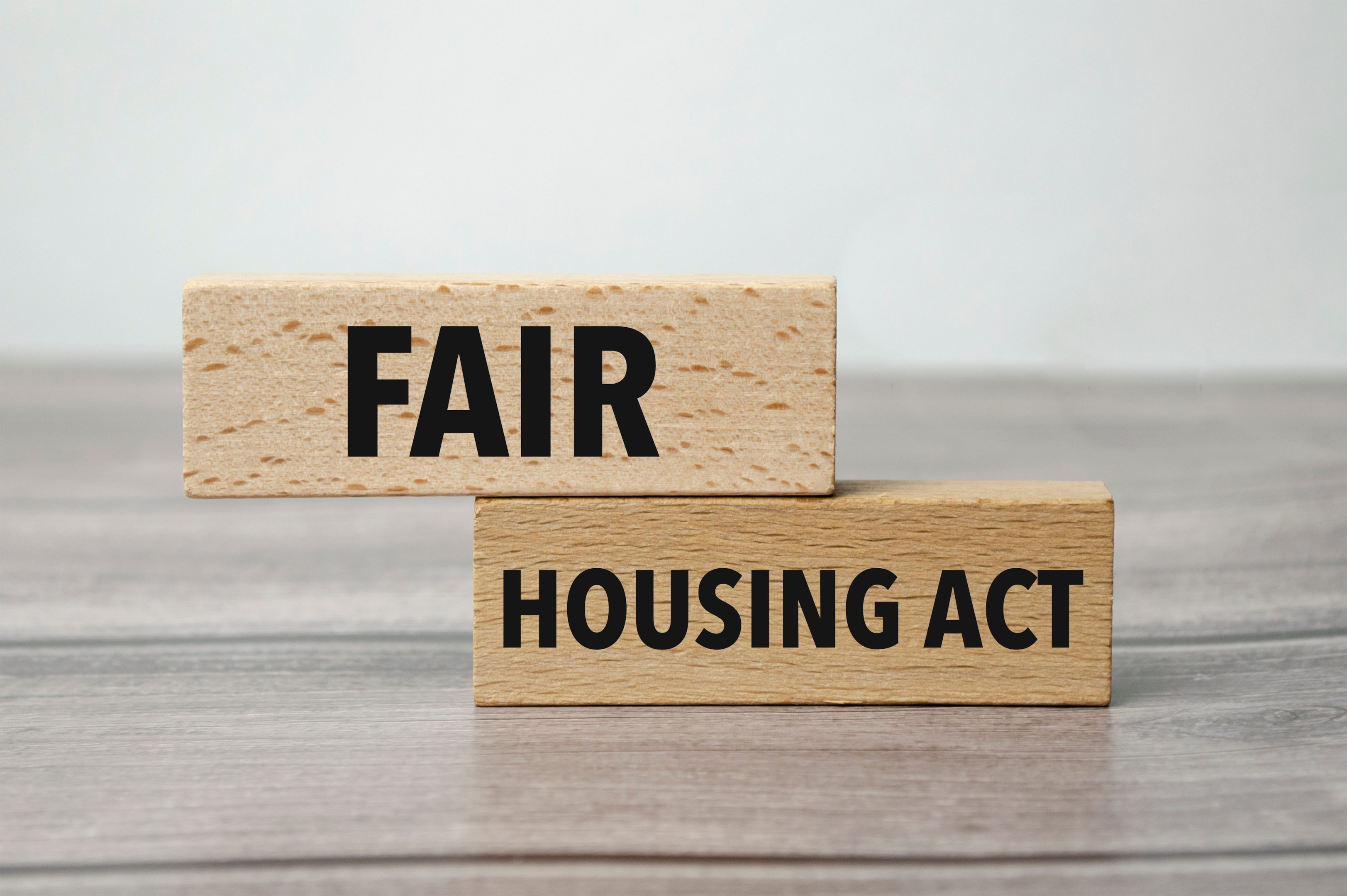What is the Fair Housing Act?


The Fair Housing Act, also known as Title VIII of the Civil Rights Act of 1968, is a U.S. federal law that was enacted as a follow-up to the Civil Rights Act of 1964. The main objective of the Fair Housing Act is to prohibit discrimination in the sale, rental, and financing of dwellings, and in other housing-related transactions, based on race, color, national origin, religion, sex, familial status, and disability.
Here is a brief breakdown of the major elements of the Fair Housing Act:
- Race, Color, National Origin, Religion, Sex: The Fair Housing Act makes it unlawful to discriminate based on these factors in the selling, renting, or financing of residential housing. This includes any practices that would treat people differently because of their race, color, national origin, religion, or sex.
- Familial Status and Disability: Added through amendments in 1988, these protections were added to ensure that families with children and individuals with disabilities were not discriminated against in housing. The Act provides for reasonable accommodations to be made for individuals with disabilities.
- Other Prohibited Practices: Beyond discrimination in selling, renting, or financing, the Act also prohibits making housing unavailable, setting different terms or conditions, providing different housing services or facilities, falsely denying that housing is available, and engaging in harassment or retaliation, among other things, based on a person’s protected status.
The U.S. Department of Housing and Urban Development (HUD) is responsible for enforcing the Fair Housing Act, and individuals who believe they have been victims of housing discrimination can file a complaint with HUD.
What is considered a violation of federal fair housing law?
A violation of the federal Fair Housing Act occurs when a person or entity engages in discriminatory practices related to the sale, rental, or financing of housing based on a person’s race, color, national origin, religion, sex, familial status, or disability. Some specific examples of such violations include:
- Refusing to rent or sell housing: If a person refuses to rent, sell, or negotiate for housing based on any of the protected categories, they are in violation of the Fair Housing Act.
- Setting different terms, conditions, or privileges for sale or rental of a dwelling: For instance, if a landlord charges higher rent or security deposit to individuals of a certain race or religion, it would be a violation.
- Providing different housing services or facilities: If a housing provider offers certain maintenance services only to some tenants and not others, based on the protected classes, it is a violation.
- Falsely denying that housing is available for inspection, sale, or rental: It’s a violation if a landlord tells a prospective tenant of a certain race that a rental unit isn’t available when it actually is.
- Harassment or retaliation: It’s illegal to harass or retaliate against an individual because they have filed a discrimination complaint or have assisted in a fair housing investigation.
What was the problem with the Fair Housing Act of 1968?
While the Fair Housing Act of 1968 was an important legislation aimed at reducing discrimination, it had several shortcomings:
- Enforcement: The Act was initially criticized for having weak enforcement provisions. The original act did not allow for strong penalties against those who violated the law, which reduced its deterrent effect.
- Lack of Coverage: The 1968 Act did not include all forms of discrimination. For instance, it did not originally include protections against discrimination based on disability or familial status. These were added only in 1988.
- Continued Discrimination: Despite the Act, housing discrimination persisted and continues in various forms. Some forms of discrimination, like racial steering (where real estate agents guide prospective homeowners towards or away from certain neighborhoods based on their race) and redlining (a discriminatory practice by which banks, insurance companies, etc., refuse or limit loans within specific geographic areas, especially inner-city neighborhoods), can be subtle and difficult to prove.
Role of the Department of Housing and Urban Development (HUD)
The U.S. Department of Housing and Urban Development (HUD) is the federal agency responsible for enforcing the Fair Housing Act. HUD’s Office of Fair Housing and Equal Opportunity (FHEO) is specifically tasked with administering and enforcing this law. HUD’s role involves:
- Investigating complaints filed by individuals who believe they have been victims of housing discrimination.
- Conducting compliance reviews of housing providers and local and state government housing programs to ensure they are meeting their obligations under the law.
- Providing funding and guidance to fair housing advocacy organizations through the Fair Housing Initiatives Program (FHIP).
- Offering education and outreach programs to inform both consumers and housing providers about their rights and responsibilities under the Fair Housing Act.
Implementation of the Act
Since the enactment of the Fair Housing Act, HUD has implemented the law through a variety of initiatives. Some examples include:
- Affirmatively Furthering Fair Housing (AFFH) Rule: This is an approach that involves not only addressing incidents of housing discrimination but also proactively promoting housing choice and creating inclusive communities free from discrimination. In 2015, HUD provided data and tools to help communities identify barriers to fair housing and set their own priorities and goals.
- HUD’s Equal Access Rule: Implemented in 2012 and later expanded in 2016, the rule ensures that HUD’s housing programs are open to all eligible individuals and families regardless of sexual orientation, gender identity, or marital status.
Challenges
Despite these efforts, HUD faces a number of challenges in enforcing the Fair Housing Act:
- Limited Resources: There is a vast number of housing transactions that occur every day, and HUD has limited resources to investigate complaints and enforce the Act. Some also argue that penalties for violating the Act are not high enough to deter discriminatory behavior.
- Proving Discrimination: Discrimination is often subtle and hard to prove. For instance, a landlord may not openly say they are denying someone housing based on a protected class and may instead give another reason.
- Awareness: Many individuals may not be aware of their rights under the Fair Housing Act, and as a result, many instances of discrimination may go unreported.
Successes
Despite these challenges, HUD has had numerous successes in enforcing the Fair Housing Act:
- Since the Act’s inception, HUD and its partner organizations have handled hundreds of thousands of housing discrimination complaints, leading to outcomes that have promoted more equitable access to housing.
- HUD’s efforts have led to important legal precedents that have further strengthened fair housing law. These include Supreme Court decisions that have affirmed the “disparate impact” standard, which states that housing policies that appear neutral but disproportionately harm certain groups can be considered discriminatory.
- Through programs like FHIP, HUD has empowered local and national organizations to help individuals in their communities fight against housing discrimination.
- Through its education and outreach initiatives, HUD has increased awareness of the Fair Housing Act, informing both housing providers and consumers about their rights and responsibilities under the law.
Impact on Communities
The Fair Housing Act has had a significant impact on communities across the United States. Here’s how it has influenced racial and socioeconomic integration, access to opportunities, and neighborhood development:
Racial and Socioeconomic Integration
The Fair Housing Act was passed during the Civil Rights Movement, a time when discrimination and segregation in housing were rampant. By outlawing such discrimination, the Act has promoted greater racial and socioeconomic integration in many communities.
While the Act hasn’t completely eliminated segregation, it has played a role in reducing stark racial divides in certain areas. This integration allows for more diverse communities and facilitates understanding and cooperation between different racial and ethnic groups.
The Act’s amendments in 1988 to include familial status and disability have also fostered more inclusive communities, by ensuring that families with children and individuals with disabilities aren’t unfairly excluded from certain housing options.
Access to Opportunities
The Fair Housing Act has also improved access to opportunities for historically disadvantaged groups. Housing discrimination has often resulted in racial and ethnic minorities being concentrated in areas with fewer resources and opportunities, such as lower-quality schools and fewer job opportunities. By reducing such discrimination, the Fair Housing Act has helped these groups access better housing in areas with more opportunities.
HUD’s Affirmatively Furthering Fair Housing (AFFH) initiative has been particularly important in this area, as it requires communities receiving HUD funding to actively address segregation and disparities in access to opportunities.
Neighborhood Development
By reducing discriminatory practices like redlining (where lenders refuse or limit loans to certain neighborhoods based on racial composition), the Fair Housing Act has also facilitated investment in and development of neighborhoods that were previously neglected. This has led to the revitalization of many neighborhoods and improved living conditions for their residents.
In addition, the Act’s requirements for reasonable accommodations for individuals with disabilities have also influenced neighborhood development to be more inclusive, such as by encouraging housing providers to ensure that their properties are accessible.
However, while the Fair Housing Act has led to many improvements, it’s important to note that significant disparities and issues still persist. Housing discrimination, while illegal, still occurs in various forms, and residential segregation remains a significant problem in many areas. Furthermore, enforcement of the Act has often been limited and uneven. Ongoing efforts are required to fully realize the goals of the Fair Housing Act.

What are the fair housing laws in NYC?
In addition to federal protections, New York City has additional local protections under the New York City Human Rights Law. It prohibits discrimination in housing based on the federally protected classes and includes additional categories such as:
- Sexual Orientation: Landlords cannot discriminate based on a person’s actual or perceived sexual orientation.
- Gender Identity and Expression: This includes actual or perceived gender-related identity, appearance, behavior, expression, or other gender-related characteristics regardless of the individual’s sex assigned at birth.
- Lawful Occupation: It’s illegal to discriminate against someone based on their lawful occupation.
- Lawful Source of Income: Landlords cannot refuse to rent to someone because they receive public assistance, Social Security, or any other lawful income.
- Partnership Status: Discrimination based on whether a person is single, married, divorced, separated, or partnered is prohibited.
- Age: Age-based discrimination is also prohibited in housing.
- Alienage or Citizenship Status: The law protects against discrimination based on a person’s citizenship or immigration status.
- Victim of Domestic Violence, Sex Offenses, or Stalking: This law prohibits discrimination against victims of domestic violence, sex offenses, or stalking.
Step into easy vacation rental management with iGMS. Its smart platform automates guest chats, bookings, and team management, saving you time. Whether you’re an individual host or a large firm, iGMS brings efficiency to your operations and delight to your guests. Discover the iGMS edge for your business.






![Your Monthly iGMS Roundup [February 2020]](/content/images/size/w600/wordpress/2020/02/igms-roundup-feb-2020-cover.png)

